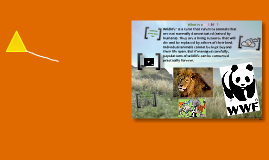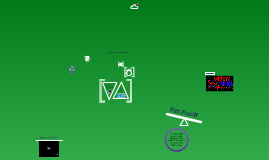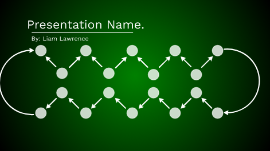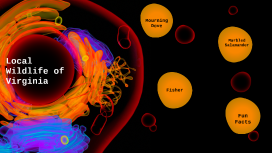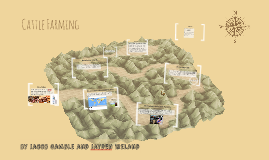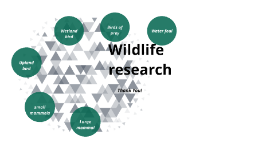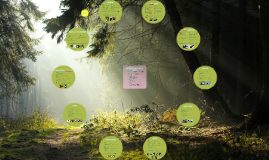Wildlife Presentation
Transcript: Welcome as Team Bravo Presents... WILDLIFE! By: June Titus, Julie Darden, and Ryan Galuchie This feature presentation includes... Herons Canada Goose Minks and Muskrats Striped Skunk Chipmunk Mallard Wood Warblers Wrens Indigo Bunting and Dickcissel Finches and House Sparrows Chipmunk What is it? Small, agile rodent It is a member of the squirrel family Related to the fox, flying squirrel, and woodchuck. What type of habitat does it live in? The species ranges from southern Quebec to northern Florida and Louisiana, and from the eastern seaboard west to Oklahoma, Kansas, and the Dakotas. The optimum chipmunk habitat is open deciduous woods with plenty of stumps and logs. Habitat for chipmunks, and most other forms of wildlife, is constantly changing. Shrinking habitats as shopping centers, housing developments, and highways cover once open land. What does it eat? Chipmunks are omnivorous. They feed on nuts and seeds of woody and herbaceous plants. They also eat mushrooms, berries, corn, and the flesh and the seeds of fruits and vegetables. Birds’ eggs, insects, and small amphibians, etc. supplement their vegetable diet. Chipmunks eat food on the spot or carry it away for hoarding. What is its natural predator? Hawks, minks, weasels, foxes, bobcats, house cats, raccoons and snakes prey on chipmunks. Fleas, lice, mites, internal worms and botfly larvae are parasites to the chipmunk. Interesting Facts: You may already know that an enormous amount of food can be held in their cheek pouches, which can stretch to three times the size of the head. What you may not know is that Alvin and the Chipmunks are now 53 years old. Wild chipmunks, on average, live two to three years; captive specimens have lasted eight. STriped skunk What is it? a cat-sized American mammal of the weasel family, with distinctive black-and-white-striped fur. When threatened it squirts a fine spray of foul-smelling irritant liquid from its anal glands toward its attacker. Belongs to the Mustelid family Related to weasels, ferrets, martens, fishers, minks, otters, and badgers. What type of habitat does it live in? Found from southern Canada and northern Mexico Skunks live in a variety of habitats They favor mixed woods, brushland, fields, etc. Cornfields are good feeding areas, where skunks can forage for insects and corn. What does it eat? Striped skunks are omnivorous. What they eat depends on where they live and what is available. Spring/Summer- insects, small amphibians, chipmunks Fall/Winter- fruit, small mammals, grasses Chiefly nocturnal, they hunt from dusk until dawn What is their natural predators? The great-horned owl, which lacks a well-developed sense of smell and apparently is not bothered by the skunk’s musk, is a predator. The skunk’s potent musk warns off most predators such as dogs, foxes, coyotes, etc. Other mortality factors are diseases, highway kills, and trappings. Skunks are host to fleas, lice, mites, etc. Interesting Facts: You may already know the striped skunk is able to accurately direct the stream of musk up to 10 feet and the smell may carry up to one and a half miles downwind. What you may not know is that there are three other skunk species live in the United States: hooded and hognose skunks, which inhabit the Southwest; and the spotted skunk, found over much of the country. MInks & muskrats What is it? Minks are semi-aquatic members of the Mustelid family What type of habitat does it live in? Most of the Northern Hemisphere in Europe and North America Edges of lakes, streams, and rivers in forested areas. What does it eat? Muskrats, mice, rabbits, shrews, fish, frogs, insects, snakes , waterfowl Feeds on whatever is most readily available What is its natural predator? Foxes, bobcats, and the great horned owl Interesting Facts: You may already know that trapping is a significant mortality factor What you may not know is that Minks kill their prey with a hard bite to the back of the skull. What is it? Muskrats are a rodent They're the nation's most abundant furbearer What type of habitat does it live in? Lives near still or slow moving water Ponds, marshes, streams, and rivers What does it eat? Roots and stems of aquatic plants Legumes, grasses, grains, and fruits Small amount of animal protein like frogs, mussels, and fish What is its natural predator? Minks, hawks, owls, foxes, snapping turtles, and snakes Interesting Facts: You may already know that Muskrats are related to rats, mice, voles, and beavers. What you may not know is that Muskrats open up areas of densely vegetated marsh, changing local habitats. Mallard What is it? The Mallard is the most common duck in the United States, North America, and the Northern Hemisphere What type of habitat does it live in? Shallow, marshy areas What does it eat? Eats a variety of natural and human produced foods Seeds, stems, acorns, insects, and crustaceans What is its natural predator? Skunks, crows, raccoons, opossums, snakes, foxes, and snapping turtles Interesting







